Fulton Grease Cap - 1.943" Outer Diameter - 1-3/8" Tall - Drive In

Thank you! Your comment has been submitted successfully. You should be able to view your question/comment here within a few days.
Error submitting comment. Please try again momentarily.
- All Info
- Reviews (84)
- Q & A (0)
- Videos (2)
- Photos
Fulton Trailer Bearings Races Seals Caps - F001524
- Caps
- Standard Grease Cap
- 1.943 Inch O.D.
- Fulton
Grease cap fits trailer hubs with 1.943" inner diameter.
Features:
- Grease cap for trailer hubs
- Drive-in installation
- 20-Gauge steel construction
Specs:
- Quantity:1
- Flange diameter: 1.943"
- Crown height: 1.04"
- Flange length: 0.34"
- Overall height: 1.38"
Dimensional Information

| Part No. | Material Gauge | Flange Diameter (A) | Crown Height (B) | Flange Length (C) | Overall Height (D) |
|---|---|---|---|---|---|
| 1500 Series | |||||
| F001524 | 20 | 1.943" | 1.04" | 0.34" | 1.38" |
001524 Fulton Grease Cap, 1.943" x 0.34" Flange
California residents: click here
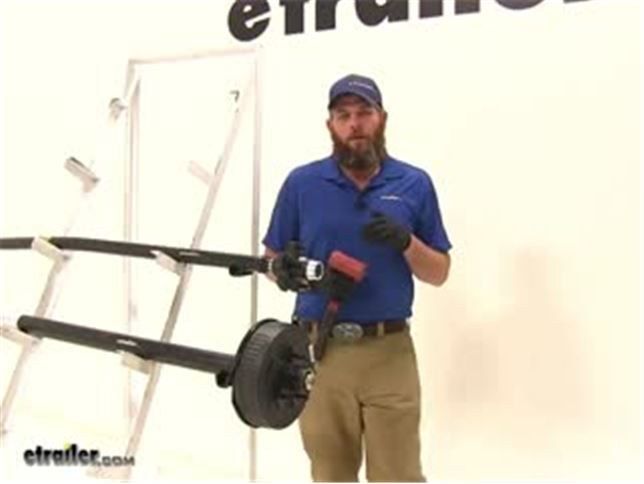

Videos are provided as a guide only. Refer to manufacturer installation instructions and specs for complete information.
Video Transcript for Trailer Bearings Races Seals and Caps Rebuild
Speaker 1: Today we're going to take you through the rebuild process on a couple of hubs. We've got an idler hub, and here we've got a hub and drum assembly. Works with electric rigs, but this can also work for just standard discs, if you've got a disc brake style setup.Basically what we're going to show you is how to get all of the bearings out. How to remove the seal. How to remove the race's if they're damaged, then get them replaced in the proper manner. We'll show you how to use an easy loop hub, which we have here.The first thing we are going to need to do is, get the grease cap off the end.
It can have either a rubber plug in it like this one does, or it can be a solid metal cap.These are pressed fit in there, basically by tapping on them on the back side. To remove them, a deadbolt hammer is typically what we're going to use. We're just going to start tapping as we go around. You'll see a little separation start right here, and slowly it'll work it's way off.Now the next step's going to vary a little bit depending on your axle setup. Do you see this is going to have a keeper that goes around the nut.
And that prevents that from being backed off, or removed. A lot of times you'll have a castle nut, which will have just little tabs that stick off, and there will be a cotter pin that passes through it. Just depending on your application, you need to get the keeper for the nut off. This style we just kind of pry out. A cotter pin you would just remove of course.Once we have that off ...
We'll start to take off the nut here, and the washer that's in behind it. Now yours should look a whole lot more dirty than this. There should be a lot of grease packed in, and through the hub, this one's brand new. We thought it'd be nice to show you the components before the grease was on .. Of our washer that comes off.And then here we're going to have our outer bearing.
Continue to pull that. We're gonig to have our inner bearing here. That sits in the backside of the hub. And we didn't put it in yet, we will show you how to put it in. But a seal would typically be covering the backside here. We'll show you how to use a seal removal tool, or another tool. To get that pried up and out. To get an access to that inner bearing.Now for a drum style like this, that process for disassembly is going to be just the same. One thing to keep in mind if you're using a disc brake setup. You'll have to remove the caliper before the disc is going to come off.Now once we have the spindle exposed, as we said this is going to be really greasy. We want to get all the grease removed, and the first thing we'll do is inspect it. We want to make sure that it looks just like what we have here. Everything's nice and smooth. We don't see any kind of discoloration, or any marring on the metal. Indicating that our bearing's got hot.If you do have any of those symptoms, at this point it's time to replace those bearings. You don't want to repack them. Get new bearings, and put in there. You might have a bearing that's come apart in here. Another surface to ensure is in good condition, is where your seal is going to go. That helps seal all the grease inside of our hub. With a damaged or broken seal, that grease is going to seep out. Either out of the hub, or in this case into our brake assembly.Now if your axle has brakes, we're also going to check the disc. Make sure it doesn't have any issues, or your hub. And this is going to be a hub and drum assembly. The brakes are going to ride on this machine surface. You're going to check that for signs of excessive heat, discoloration, or cracking. And this is our magnet surface. We'll check that surface for the same issues.Now inside the hub regardless if it's a disc brake, it's a drum brake like this. Or just a standard idler style hub. You're going to have an outer race. Would be right here, it's a small tapered piece of metal your bearing sits in, and rotates on. That's basically the outer portion of the bearing.You have the same thing here on the backside. This is called the inner race. Now if those show any signs of wear, overheating, or cracking. Those are also something we'll need to replace, which we'll show you how to do in just a minute.Now, with your brake assembly exposed, if you do have electric brakes like we have here. It's a good idea to check all the components for wear, cracking, maybe missing pieces. Check your pad thickness to make sure those are in good shape. Basically if you have a non working brake assembly and you put everything back together, you're just going to have to take it apart and do it all over again to get back to the brake assembly. This gives you a really good option to be able to change them out.And most applications are going to use a four, or maybe a five bolt flange to hold them in place. And you'll just remove the lock nuts, or sometimes you'll have a hex nut with a lock washer. You want to remove those, and then simply slide your assembly off after you cut the wiring.The friction material itself should also be checked for any kinds of cracking, or overheating. If you have any grease inside the system at all, it's likely it's gotten on those pads. It's a good idea to get those changed. Now as far as the removal of the races go, it's going to be just the same whether we're using an idler style hub like we have here. A drum brake like we have here. You can basically see where the idler is, here in the middle of the hub. It's going to go all the way around there, and we just have this extra material here to provide our braking surface.Now if you're doing a disc brake style job again, it's going to be just the same here with the races living inside of the actual hub portion. You'll just have the discs there for the brakes to make contact. We're going to use this little bit smaller one, it's a little bit easier to manage to show you how to get these out. We've talked about where the races are. The outer here, the inner being closer to the inside, but on the backside of the race there's a little lip. That lip's meant to stick out just a little bit further than the hub, and provide us an area to put our tool on, and help to drive that out.If you look all the way through there on that inner race, you'll see that little lip that sticks out just from the hub slightly, and it gives us enough area to use our tool on. Now generally to remove these you're going to use a punch, similar to this. Some guys will use a screwdriver. Or a piece of pipe. If you have a piece of pipe that's small enough to fit inside of that diameter, you can take that down through and allow it to rest on that lip.Use our punch, and then just need a hammer. And we'll start working that out. We're going to tap all the way around. Kind of equally, and evenly apply the force to get it to come on out of the bottom for us.You can see now as it starts to come out there's going to be a little gap created between the hub and the race. And we can just keep going, bringing it on out. Then you can inspect the inside of the hub surface there. Make sure no damage or anything has occurred, and repeat that same process for the outer race if you plan on removing and replacing that one.Now in the outer flat edge, you can see we're going to have our tapered edge on this side. If we roll our race over to the flat side, typically there's going to be a manufacturers part number on there. That will help you identify which race it is, that you need to go back in your system. If those are rubbed off, worn off, if you can't read them. You can measure the outside, to outside diameter of the race here. It's a good idea to use a micrometer to get it exact.Now here's your basic micrometer. And again, the outside of the race is what we're going to need to measure. You want to go . I set the thickest point there. Looks like this one's going to be about 1.98. That's going to be the measurement you'll want to supply.Now while we've got this out, let's also look at the proper way to measure our bearing. Instead of the outside for the bearing, we need to measure the inside diameter. That's going to be pretty simple. Let's pull that out, find the largest measurement we can. Which here, looks like it's going to be 1.03. With that information, we'll be able to get the correct bearing, and the correct race, so they'll fit together properly and make a full bearing kit for us.Now here's the race, we're going to show you how to get this put back in. Basically just going to press fit inside of our hubs. We need to get it down on there. Kind of like that. And you'll have a couple options. A lot of times you're going to see do it yourself or at homer, just going to use a wooden block. Just place it on there. That's going to get you started, but at that point you'll struggle in getting it to go all the way down into it's seat.Now to take care of that problem, there are several seal drivers that are available. Seal and race drivers that are available out there on the market. It's designed to fit down inside of our race, inside of our hub and get it down there where it needs to go. This is part number ptw83020, has several different sizes, even if you have multiple trailers it's going to do the job.Now the side with the angle on it, is designed to fit down inside of our race. If we use the other side, that's going to be for driving your seal into place. Just want to hold it, and take it on in with your hammer. You'll see, you just want to insure that our race is all the way up against that line on the hub where it's supposed to mate to.Now when it comes time to pack your bearings you're going to have several different ways of doing this. You can just use your hand, is the traditional method. That's going to be the method probably reserved for the very occasional trailer work kind of situation. If you do it once or twice a year, probably get away with it that way.Next you would go to a, kind of a sandwich funnel style almost. If you look inside of there, you can see the bearing. It's located between the two pieces. Just use a grease gun. Start filling that with grease, and that's going to fill our bearing for us. And the third, with this one you're just going to place your bearing down and in. It should be pretty close to center. And then we've got our cone her that's going to go down and secure that.Now I think this style, wastes a little bit more grease than what this style will. This has a dust cap. You can see, you can keep your grease in there, put your dust cap on there and save it for later use. This will be if your going to do it every couple years. And this particular style would be if you're a more regular user.Let's start by showing you how to use a bearing packer. Similar to this. Again, we've just got our grease inaudible 00:11:07 here on the top. And then just slowly start to fill it. Now I like this style quite a bit. I think even regular users might enjoy it, because you can get a really quick visual look at that bearing. You're not going to have to overdo it, or have to much grease.You can kind of see in there now, we're starting to get grease to come out of it. Couple more pumps, we'll be good. You can see we've got grease coming out all the way around. Where all of our bearings are. Got a little bit of excess there. Just take that around the outside of it. And then we should be able to lift it off. And now you can see what we we're talking about. Just a little bit of excess there, that you're just going to wind up wasting.Now we'll take our bearing, we're going to place it right down in our race. And then we'll cap off the back with our seal. Right now our seal's going to fit in just like our race did. It's going to have a little bit of a pressure fit to it. Now very often in this situation, I see people using the four by four method. Kind of here, just placing that on and tapping it. As an option though, if you do have one of these. You can see that's designed to fit right on the top of the seal. And help drive it in.The biggest thing here is, just going to be getting it driven in squarely. You can see, this side's in a little bit further than this side. I'm going to start this side first. Now since we didn't have the opportunity to show you before, we're going to take a look at pulling a seal. Now this is a seal puller, we carry this on our website part number ptw1219. This is meant to hook underneath the seal. And then you kind of pull up on it, and just like our race you'll have to work all the way around that edge. Just bringing it out a little at a time.If you don't have that available. Another option would be a screwdriver. You just kind of get that under the seal, and turn it. And see, that'll allow you to also pop that out. We've taken care of our race. Our inner bearing. Our seal. The last component, before we put our hub back in place is going to be our outer bearing. Now with this bearing, I'll show you the hand packing method.This is definitely . Slightly dirtier method than the bearing packer. When we get grease on our hand we want to look at the larger side of the bearing. This is the smaller side. We have a larger side In between the inside and outside there's a gap. We can see our rollers in there. We want to grab that, and use that gap and shove grease inside of it. Now this is going to take a little bit, you want to work in the same spot until you get the grease pushed all the way through. We can see on the top there we've got a little bit starting to come through.And once we push it in the bottom, and you see it start coming out the of the top in those little drips, it's going to indicate that, that section's fully packed. Just need to work all the way around their outside edge now and do the same thing. Alright, once that's all the way around . The bearing will be ready for use.Now one more thing I like to do. We can see our inner bearing there, and our outer bearing. Well between the two, got a pretty big gap in there. If you'll take a . Pretty good amount of grease. We're just going to go all the way around. See how we can go all the way around the inside and just line that really well. The more grease we have in here, the less chance we have of any moisture getting in there, which can cause corrosion, rust, pitting. Pretty much things we do not like when it comes to bearings, races, and hubs.Put plenty of grease in there. And then this one does have the easy lube spindle, that'll even fill it in more. Now we can get our assembly slid on. I like to keep my thumbs on that outer bearing, just to prevent it from . inaudible 00:15:28 pushed off there. Now we can put on the original hardware that we removed, in taking off our hub the first time. In our case, we had our washer and our nut.Now most commonly you'll see pliers similar to this being used. We basically want to get that tightened down. Once it's fully tightened down you'll feel some resistance in the hub. We back it off just slightly. That'll give us a little bit more freedom of motion there. Something you don't want however . Is any movement in, or out on your hub. You want to be sure that everything is compressed, and you don't have what's called end play. Which would be the play in and out.Once we've got that set, then you'll put on whatever tight keeper yours came with. Get that put back in place. Now with an easy lube style hub, you're going to place your grease gun on the end, and then you can just fill the remainder of that hub up.Now for your typical applications, you're either going to have a solid cap, or a cap that'll have a rubber plug in it. A solid cap's going to be for an axle without the grease inaudible 00:16:51 here on the end. Goes on there. Just knock it on with your rubber mallet. Same with the one with the plug. Just gives you a removable area there, be able to cap that off.We'll show you how to put that on. Now as alternatives as well, a lot of times on boat trailers and marine kind of situations. You'll see a bearing buddy. This is going to apply a little bit of pressure on the grease, you'll fill it up. This kind of comes out just a little bit. That applies constant pressure on the grease to make sure we don't have any air, or anything like that. Then there is also an oil bath hub available. Now this is going to be for use with seals that are going to be designed specifically for oil bath use. You'll have to change that seal.We're using a double lip seal. There are also single lip seals available. Of course a double lip seal is going to give you just a little additional security. Keep that in mind when you order. But let's get this knocked on there now so you can see how that works. We just want to take the cap, we're going to center it. This is going to be very similar to what we did with the seal. And then just gently start tapping it around the outside. And it'll seep down on there for you.It's really going to be the same thing that you'll do with any of the end caps. Now with this side done, it's a good idea to take care of all the other hubs. Get them all on the same maintenance schedule. And as long as you'll periodically check the grease, take your trailer out for a trip occasionally. Just to keep everything lubricated. It should extend the life of these parts, and give us years of good service.
Customer Satisfaction Score:
99% were satisfied with this product
1% of customers were not satisfied
- Product did not meet expectations
- Wrong item was ordered
Customer Reviews
Fulton Grease Cap - 1.943" Outer Diameter - 1-3/8" Tall - Drive In - F001524
Average Customer Rating: 4.9 out of 5 stars (84 Customer Reviews)
Grease cap fits trailer hubs with 1.943" inner diameter.
they are great fix great and are well m ade

Bearing caps fit perfect,will order again as needed
perfect fit for a 60+ year old farm implement I'm restoring.
The pair of grease caps I purchased fit perfect. Your website was very helpful by giving me actual dimensions so I could make sure It would be the right part.
The caps went on an old homemade utility trailer with non standard size hubs, and with your large selection I was able to complete my project.
I will highly recommend etrailer to anyone needing parts.
the grease cap is just the size I needed,the hubs on my trailer are old and the ones these days are all a different size,but etrailer got the right size for me. thanks etrailer the caps are on my trailer.
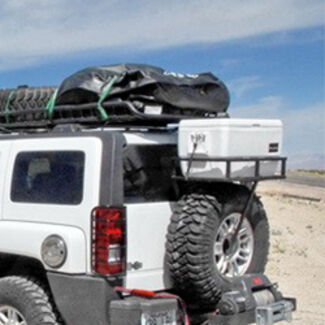
Jimmy G.

9/8/2019
good

I bought 4 of these caps for a tandem-axle trailer. Three fit perfectly. One was too loose to stay in place and required a thin strip of brass shim stock to make it secure. I don't think it's a fault of the caps, probably a variation in the opening in the hub. Perhaps one hub had been replaced by a previous owner and wasn't the same size as the other three. It would be good advice to measure all your hubs with a micrometer to avoid this issue. Notice that some of these caps only differ by a couple of thousands of an inch, but that difference can really affect the fit.
Looked all over for weeks for this Grease Cap. Found your website. You had the right size I need to complete my rebuild of an old boat trailer. The part fit perfectly.
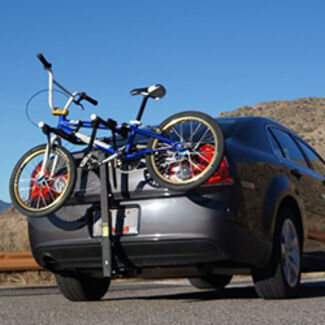
Larry

11/21/2018
Excellent - Absolute No Problems
I could not find what I needed locally but etrailer had it. Great price, very fast shipping, and an overall perfect experience. Very pleased!
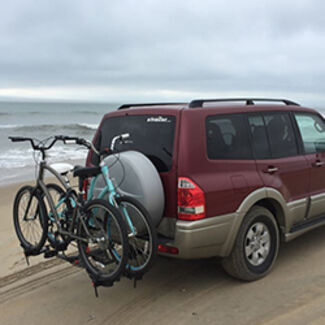
Michael

5/29/2019
Still in place and doing fine after a year.
Received the Grease/Dust?Water caps very fast. They were purchased to replace missing caps on one of my trailers so that the axle/wheel bearings would be protected from intrusion of dust and water and other contamination, reducing frequency of having to remove, clean, re-pack, replace and adjust the tension and reducing the concern of bearing failure due to contamination/premature wear.
Quality trailer product at a reasonable price. These grease caps were just what I was looking for. Thanks for the top notch service.
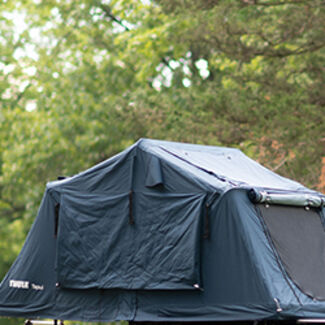
B. K.

5/20/2014
The grease caps are still working like new on my trailer after a year. No problems.
I was in the process of restoring a low speed agricultural axle and hub set that was probably from as far back as 1952. I found all of the bearings, races, and seals at local auto parts stores with the exception of the dust caps. I tried every auto parts vendor and trailer sales outlet known to man before finally finding the right size cap at E-Trailer. Their service was great. Shipping was cheap and prompt and the new caps fit like a glove.
was as described
I built a fishing boat trailer out of "pieces" I had. The dust caps for the wheels I had were missing. It turned out that they were not a common size so after doing a search I was able to find just what I needed at etrailer.com. I washed the preservative off them and gave them a coat of paint and my boat trailer was complete.
I have an old axle with missing dust caps. I haven't a clue what vehicle or year it was from. I checked everywhere finding that they do not have measurements on most and the ones with measurements didn't include my size. etrailer.com changed that. Thank God they had everything needed to get the right dust caps with ease. Thank you for your site.

This cap goes to an older cement mixer that was used once and the bearing cap came off and was lost. It was made in Canada and I was having a heck of a time finding a cap that would fit. Etrailer came through and hooked me up with the right part. An excellent bunch to work with. Thanks, guys.
Good communication
Great product, but had to return it because wasn't correct size measured on my end. Simply was guessing. However, please continue to put all the dimensions of your caps within the descriptions as was in this one. Certainly helped me make a decision from other competitors, even though I didn't get an accurate measurement prior to purchasing. Trying again with a 2nd purchase from etrailor. Simple and a great website, keep it up.
This is to replace a bearing dust cap in an old cement mixer that was made in Canada. After a lot of research I was able to find one in Canada, however they would not export it to the USA. I was able to cross reference part numbers and came across this one at etrailer. Fits perfectly. Thanks.
Rating: excellent. The boat trailer bearing races and bearing covers were shipped promptly and arrived quickly. I am happy with the responsive service from etrailer.com and recommend them to others.

Only issue is after 1 year the grease cap is completely covered in rust. (the trailer sits out in the weather)
They actually arrived dirty/greasy. They felt a little sticky. I cleaned them off, and they looked better. I wish I could say they work well, but they were too small. That was my fault. I needed something for my 1966 Aristocrat travel trailer. I guessed wrong. 4 stars because of the dirt.
Thank you for having this uncommon size available. The grease caps fit perfectly on my 75 year old trailer axle.
As I have come to expect E Trailer has delivered on time and in good condition. The Wheel Hubs fits perfectly and my trailer is on the road again.
Product is just as described. Good fit for the utility trailer it is being installed on. Quick delivery time.
Ordered two spindle grease caps and they shipped next day. Can't get much better than that! Parts were exactly what I needed.
See what our Experts say about this Fulton Trailer Bearings Races Seals Caps
- Do You have Grease Caps for a 1.935 Bore Diameter HubIf there is any corrosion built up on the hub, it could be built up corrosion built up on the hub bore making the hole read smaller. Grease caps do not have to be very deep. They only have to go in far enough to fit snug and tight inside the hub bore. Many grease caps have a flange length of just a little over a 1/4 inch, and most are well under a 1/2 inch. If their is a bit of corrosion, try lightly scrubbing with some steel wool. After cleaning it up, a 1.943 cap like part # F001524...
view full answer... - Grease Cap Closest to 1.934 DiameterWe have one option that may work for you as it is very close to 1.934 inches, but there isn't a cap available with that exact measurement. The cap with the closest diameter to that is the Fulton Grease Cap # F001524. This cap has a 1.943 inch outer diameter, and I don't see any reason why you wouldn't be able to make it fit considering the difference is just 0.009 inches. I have added a link below to a video review for you to check out as well of the Fulton Grease Cap # F001524.
view full answer... - Dust Cap with Over 1 Inch Depth with 1.98 Inch DiameterWe don't have the "normal" grease caps that will fit your assembly, however, the 2" Lubed Dust Cap & Rubber Plug - 1.99" x 1.40" x 1.18" - Qty 1 # DC200L-DCRP will work just fine for you. Even though you don't have the zerk fitting on your spindle, these grease caps will work very well of you. The rubber cap will still keep dirt and debris out as well as moisture. Any of the Bearing Buddy protectors for your 1.98 like # BB1980A will also work for your application.
view full answer... - Replacement Grease Cap RecommendationIt looks like the Fulton Grease Cap - 1.786" Outer Diameter - 1-9/16" Tall # F001503 is going to be slightly too small for your needs. The closest replacement grease cap we have to your 1.934" OD size is the Fulton # F001524 which is 1.943" OD and 1-3/8" tall. I've linked our entire selection of grease caps to this answer, the next closest size after that is the # TRAG-DC-196 which is 1.957" OD.
view full answer... - Recommended Grease For Packing BearingsThe Bearing Kit for 1 inch BT8 Spindle, part # BK1-100 does not come with the bearing grease included. We have the bearing grease available in several different size containers. I have attached a link to our product page for the bearing grease we have available you can check out. To make it easy to pack the bearings I recommend a LubriMatic Deluxe Bearing Packer, part # L70025. This has a fitting at the top that you can use a hand operated or power grease gun with. I have also attached...
view full answer... - Trailer Hub Dust Cap for 1.940 Hub BoreAre you sure you didn't order a cap for a 1.968 hub bore? We don't offer a cap for a 1.986 bore. The next size down would be for a 1.943 bore, part # F001524 which would be the correct fit for a 1.94 bore. Keep in mind, the dust caps are meant to be slightly oversize for a tight fit. You'll need to persuade it in with a hammer and a block of wood. I've linked to a product description video for the # F001524 dust cap.
view full answer... - Which Grease Cap For Hub With 1.940" BoreFor the 1.940" bore on your hubs you will need the Fulton Grease Cap - 1.943" Outer Diameter - 1-3/8" Tall - Drive In # F001524, but to determine the correct bearing assemblies you will need to do a little disassembly as I was unable to confirm which bearings you axle uses. You will need to remove one of your current hubs and look for the bearing numbers stamped in the face of each of the bearings as shown in the included picture of the # L44649. If your bearings are worn to the point...
view full answer... - Grease Cap Recommendation for Trailer Hub with 1.938 inch BoreFor your hub that has a bore of 1.938 you would want the part # F001524 which has an outer diameter of 1.943 inches. This will fit your hub well.
view full answer... - Looking for 1.94 Inch Grease Cap and 35898 Grease SealAs far as a grease cap goes, I've found one that would work for you. The Fulton # F001524 has an OD of 1.943, which would make for a good compression fit in your hub bore. As far as the seals go, I didn't have much luck. I've looked through the grease seals we offer, and I'm not seeing anything that comes close to the dimensions you provided, I'm sorry to say. I even did a Google search of the 35898 reference number, and came up empty handed. There have been occasions where we've found...
view full answer... - Grease Caps With Outer Diameter Smaller Than 1.988 InchesWe do have a grease caps that are smaller than those with a 1.988 outer diameter like the Grease Cap # F001518. In order to know the correct fit for certain you will need to use a digital caliper and take a measurement, but I'll go ahead and list out the smallest size grease caps we offer so you can try and match up the correct size. - 1.957" Outer Diameter: Grease Cap # TRAG-DC-196 - 1.943" Outer Diameter: Fulton Grease Cap # F001524 I have also added links below to video reviews for...
view full answer... - Triton Grease Cap SizeMeasuring the inside diameter of the hub where the cap press fits into it is the best bet to get the right replacement grease caps. If you have access to a dial caliper, that would make the job that much easier. Measuring with a tape measure is difficult in this application. If you would like to try to find a part number and or manufacturer on your hub I would be happy to try to find the correct grease caps for your application. I am here to help let me know any information you can come up with.
view full answer... - Grease Cap Recommendation for Hub with 1-15/16 inch Hub BoreThe closest grease cap we offer to what you would need is the part # F001524 that is designed to fit hubs that are 1.943 inches. 1-15/16 inches in decimal form is 1.9375 inches.
view full answer...
Do you have a question about this Trailer Bearings Races Seals Cap?
Info for this part was:









At etrailer.com we provide the best information available about the products we sell. We take the quality of our information seriously so that you can get the right part the first time. Let us know if anything is missing or if you have any questions.




























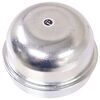

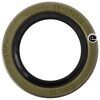
















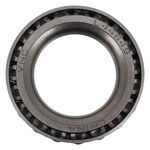
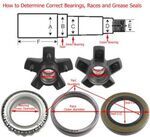
William B.
3/16/2018
They havent fallen off yet.